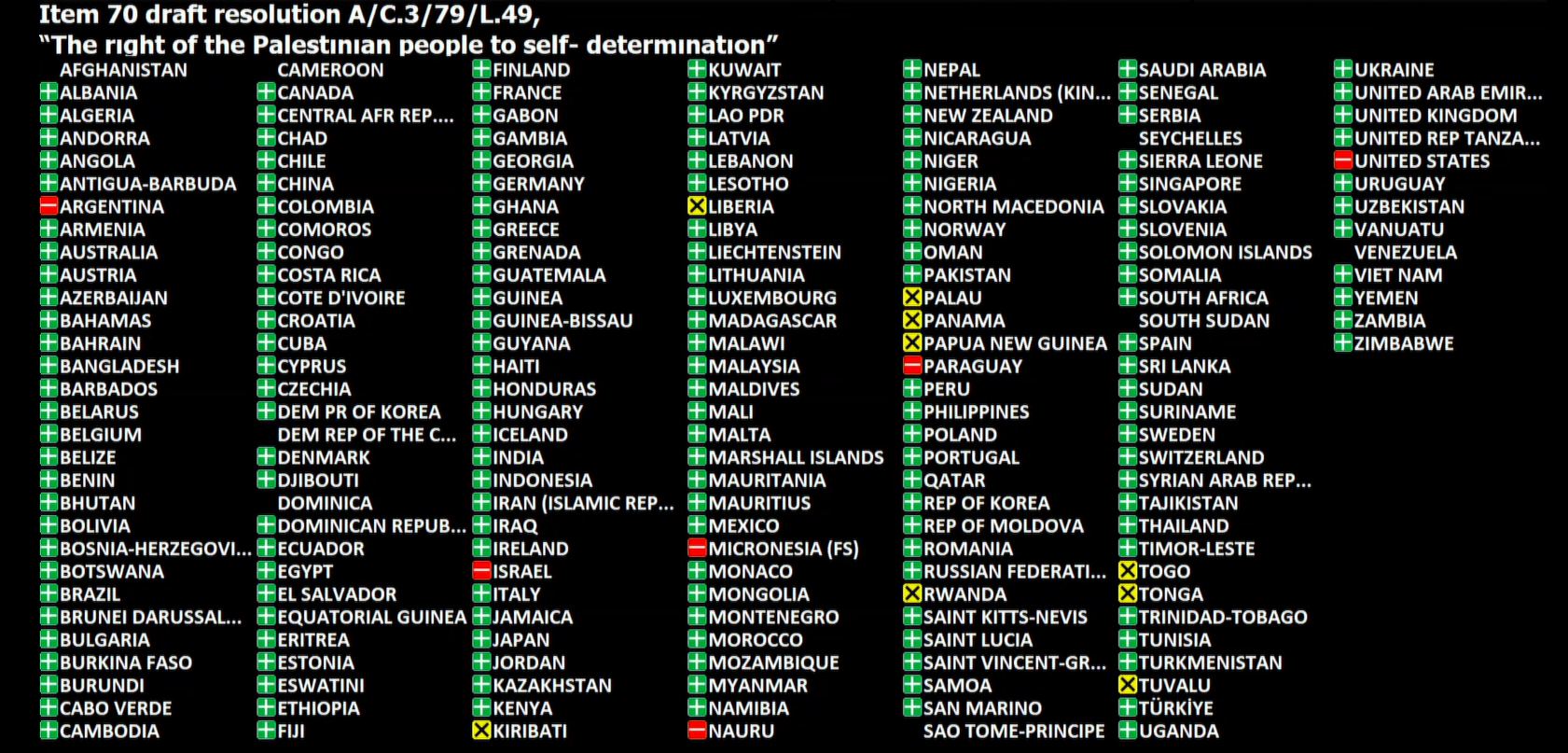The Riyadh Summit: Balancing Symbolism and Strategy in the Middle East

Share
On November 11, Riyadh hosted an extraordinary joint Summit of the Arab League and the Organization of Islamic Cooperation to address the escalating crises in Palestine and Lebanon amidst a backdrop of intensifying regional tensions. The Summit built upon its November 2023 predecessor, which convened to explore ways to address the onslaught in Gaza.
The 2023 summit had limited material impact on the progress of the war, resulting in almost no relief for Palestine and failing to limit the expansion of the war to Lebanon, or even reduce the exchanges of fire between Israel and Iran. So the question then is, what were the goals and expectations of this summit? If the previous one had little impact on the ground, did it have any other reaching effects that could be amplified by this summit?
Inside the Summit

Hosted by Saudi Arabia, the Summit reflected evolving regional dynamics. The level of representation at the Summit was high, with significant representation at presidential, monarchical and head of government levels.
Statements by heads of state and government revolved largely around the necessity of achieving a ceasefire and ensuring the flow of humanitarian aid to Palestine. Multiple leaders, including Saudi Arabia’s Crown Prince, referred to Israeli actions as genocidal and constituting crimes against humanity.
The communique issued by the Summit states that more should be done in coordination with the international community to ensure the flow of humanitarian aid and prevent further violence and violations of human rights and international law.
It accused Israel of threatening international peace and security, and destabilizing the region, calling for the implementation of relevant UN General Assembly Resolutions and requesting the Security Council to take enforceable decisions to demand that Israel cease its attacks on the occupied territories. It also called on the Security Council to respond to the demands of the General Assembly Resolution to grant Palestine full membership in the UN. The Summit also called on the international community to implement the advisory opinion of the International Court of Justice on ending the Israeli occupation.
It further condemned the grave violations perpetrated by the IDF in its campaign, including, genocide, ethnic cleansing, kidnapping, torture, extra judicial executions, urging the Security Council to launch an independent investigation into these violations. Denouncing the Israeli attacks on UN personnel and peacekeepers, it emphasized that they constitute a direct violation of the UN charter, and demanding a withdrawal from Lebanon.
It continued along similar lines throughout, condemning the destruction of cultural heritage and the indiscriminate destruction wreaked on Palestine and Lebanon, and appealing to the international community and the Security Council to take action.
It also called upon the participants to engage in a campaign to freeze Israel’s membership in the General Assembly and its subsidiary organizations, based on the advisory opinion of the ICJ, and its violation of the UN charter, and threatening international peace and security. It urged countries to cease exports of weapons to Israel, and to sign onto the initiative led by Turkey to send a joint message to the Security Council, the General Assembly and the Secretary General of the UN to call for a cessation of exports of weapons to Israel.
The participants also called on the International Criminal Court to accelerate its issuing of arrest warrants for Israeli officials accused of crimes that fall under the jurisdiction of the Court. Reiterating the resolutions of the UN General Assembly, it called for economic sanctions against products of Israeli settlements, and the companies operating there.
It also emphasized that peace will only be achieved through the ending of Israeli occupation of territories, withdrawing to 1967 borders, and expressed appreciation for the states that recognized Palestine over the past year, inviting others to do so and join the Global Alliance for the Implementation of the Two-State Solution.
These formed the core of the communique, which further elaborated on the extent of Israeli violations and calls for active engagement by the international community and the UN Security Council.
Pragmatic Goals, Limited Expectations
There are no illusions. The participants are fully aware that the immediate impact of this Summit will be limited; there are no expectations that by this time next week the Israeli government will look at the outcomes of this summit and cease its operations, or that the U.S. will somehow revisit its position in the Security Council and allow for binding decisions to be made.
However, this summit serves several purposes, chief among them is consolidating the positions of the 50 countries participating, encouraging them to be more active on the multilateral front in gathering momentum for the ceasefire and holding Israel accountable.
Through its repeated calls on the international community, this Summit essentially holds a mirror to the helplessness of the international community, and the increasingly isolated position of Israel and the U.S. on this issue. It also highlights the inefficacy of the current international framework, where the ‘rules based order’ has essentially proven useless in protecting civilians in war, or even ensuring compliance with basic tenets of international law.
In pushing for the freezing of Israel’s membership from the General Assembly, they are also likely aware that this step will entail retaliatory measures by the U.S., including withdrawing funding from the UN. That predictable outcome however may not be an unintended consequence, but rather an outcome designed to further reduce U.S. influence on the organizational framework of the UN.
The Summit also serves as another brick in the growing legal architecture on the Israel Palestine issue. It will serve as another milestone and marker along the way, particularly in convening closely after the first meeting of the Global Alliance for the Implementation of the Two-State Solution in Riyadh at the end of October.
It also serves to galvanize action in other forums, and to establish and reinforce a strong voting bloc broader multilateral forums, including the UN General Assembly.
So while the immediate impact may be limited, it serves as another active step toward achieving some sort of resolution on the issue of regional stability in the middle east, and holding Israel accountable.
Ripple Effects of the Riyadh Summit

Turkey severed its ties to Israel this week, with President Erdogan announcing the decision just days after the Riyadh Summit. Despite this move not necessarily stemming from the summit’s resolutions, its timing underscores the alignment of Turkey’s position with the summit's broader goals of consolidating regional opposition to Israel’s actions and increasing diplomatic pressure. Erdogan’s choice to frame the announcement in this context lends the summit additional credibility as a platform for coordinated action.
Shortly after the Riyadh Summit, the UN General Assembly passed a resolution reaffirming the right of the Palestinian people to self-determination. Submitted by Egypt on behalf of the Organization of Islamic Cooperation—a key participant in the summit—the resolution's overwhelming support (170 votes for with only 6 opposing and 9 abstentions), including from the entirety of the European Union, reflects the cohesive messaging and diplomatic mobilization emphasized at the summit.
Once again, while this may not be a direct outcome of the Summit, the timing is opportune. Briefly after the Summit, the presentation of the Resolution on behalf of the Organization of Islamic Cooperation reflects strongly on the cohesion of the participants of Riyadh summit, and of their ability to mobilize support. The resolution also highlighted the increasing isolation of the U.S. and Israel on this issue, particularly given that the entirety of the Global North voted in favor.
On the regional front, this Summit, in shortly following the first meeting of the Global Alliance for the Implementation of the Two-State Solution in Riyadh in October, marks the ascending role of Saudi Arabia as a prominent and key actor. In taking steps to smooth its relation with Iran, and in actively engaging with the Arab League and the Organization of Islamic Cooperation, all while balancing its complex relationship with the U.S., and engaging with but not formally joining BRICs, it has positioned itself as a focal point for future engagement on regional stability.
By bringing together over 50 nations in Riyadh, Saudi Arabia demonstrates its ability to lead in both the Arab and Islamic spheres. This represents a shift in regional dynamics, where Saudi Arabia, leveraging its religious authority, economic power, and diplomatic assertiveness, is reshaping perceptions of leadership. The summit reflects a broader effort to reposition Riyadh as the epicenter of Arab diplomacy.
Symbolism & Strategy
The Riyadh Summit underscores the complexities of addressing entrenched conflicts in the Middle East while illustrating the evolving dynamics of regional leadership. Though the immediate impact on Israel's actions may be limited, the summit serves as a strategic milestone with long-term implications.
It reflects an intentional effort by the participating nations to consolidate positions, expose the inefficacy of existing international frameworks, and build momentum for a cohesive multilateral approach. These efforts aim not only to hold Israel accountable but also to challenge the status quo of global governance mechanisms, emphasizing a collective push for reform.
Saudi Arabia’s role as host highlights its growing diplomatic influence and ambitions to act as a central player in regional and global discussions. By convening such a high-profile summit and aligning with broader multilateral movements, Saudi Arabia is positioning itself as a critical actor in shaping the future of Middle Eastern diplomacy and stability.
Looking forward, the summit’s outcomes—symbolic and practical—serve as stepping stones. The strengthened voting blocs, heightened legal architecture, and cohesive messaging can pave the way for more unified actions in broader international forums. Participants may now focus on reinforcing their shared narrative and sustaining global pressure, while Saudi Arabia continues to position itself as the indispensable link between regional stability and international engagement.

